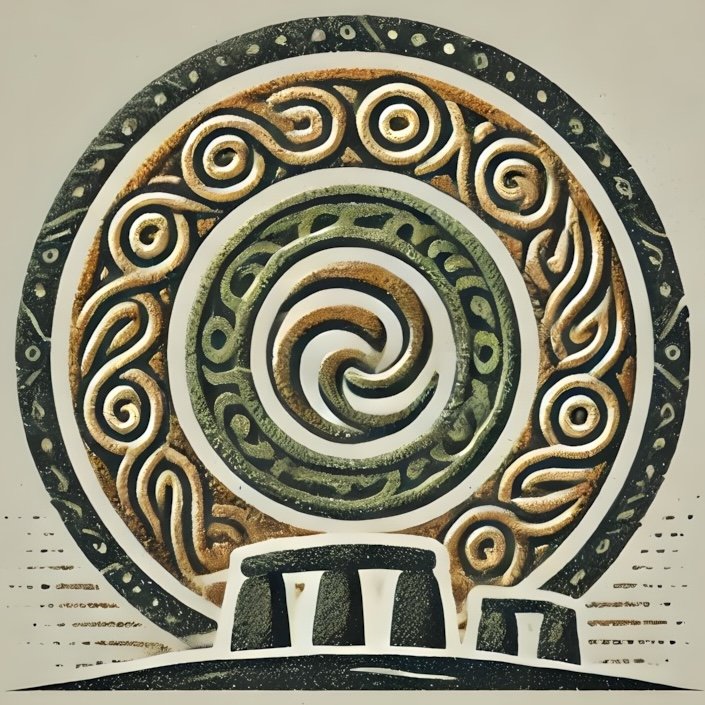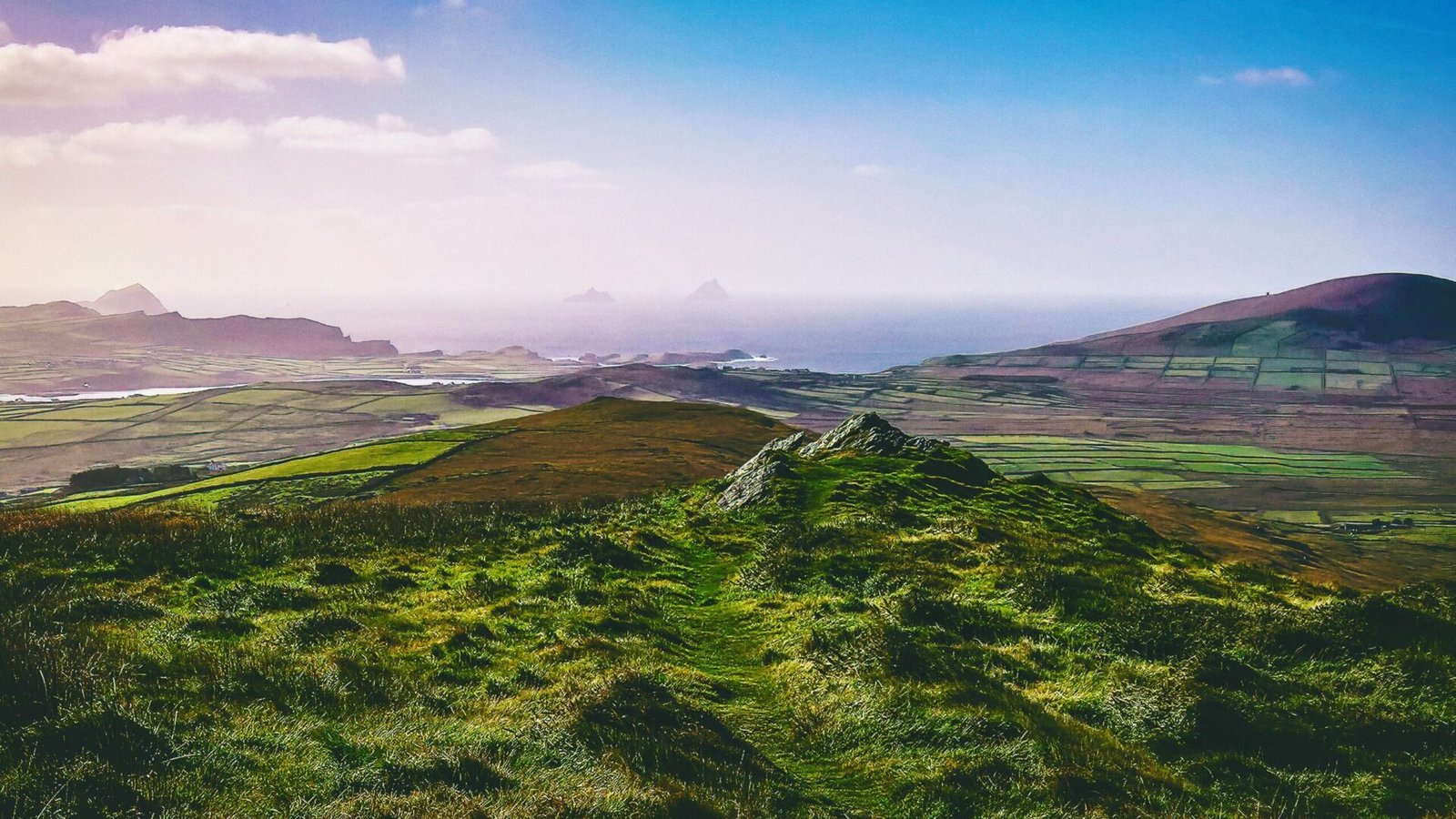Introduction to the Mesolithic Hunter-Gatherer Era
The Mesolithic Era, spanning from approximately 8000 to 4000 BCE, marks a pivotal chapter in the story of human civilization. Following the end of the last Ice Age, this period saw the emergence of hunter-gatherer societies that adapted to the changing landscapes of Ireland. As the ice sheets receded, lush forests and abundant wildlife created a rich tapestry of resources that these early inhabitants would exploit. The Mesolithic is characterized by a semi-nomadic lifestyle, where groups moved in response to seasonal changes and the availability of food.
In Ireland, the Mesolithic period is particularly fascinating due to the unique environmental conditions that shaped human activity. The landscape was dotted with rivers, lakes, and woodlands, providing a diverse range of habitats that supported various flora and fauna. The people of this era were skilled foragers, utilizing tools made from flint, bone, and wood to hunt, fish, and gather. Their legacy is etched into the very fabric of the Irish landscape, with numerous archaeological sites offering a glimpse into their lives.
Significance of Early Hunter-Gatherer Sites
Early hunter-gatherer sites are not merely remnants of the past; they are vital to understanding the social, economic, and cultural dynamics of prehistoric Ireland. These sites provide insights into the subsistence strategies employed by these communities, their social structures, and their interactions with the environment. They also reveal the technological innovations that emerged during this time, such as the development of microliths—small, flint tools that were affixed to wooden shafts to create more effective hunting implements.
Moreover, these sites are crucial for understanding the transition from a hunter-gatherer lifestyle to more settled agricultural practices that would emerge in the Neolithic period. By studying the artifacts and ecofacts found at these locations, archaeologists can reconstruct patterns of movement, settlement, and resource management, shedding light on the evolution of human societies in Ireland.
Mount Sandel
One of the most significant Mesolithic sites in Ireland is Mount Sandel, located near the town of Coleraine in County Londonderry. Discovered in the 1970s, this site has been pivotal in shaping our understanding of early Irish hunter-gatherer life. Excavations revealed a series of wooden structures, hearths, and a wealth of artifacts, including flint tools, animal bones, and plant remains.
The site is estimated to have been occupied around 7000 BCE, making it one of the oldest known settlements in Ireland. The presence of large quantities of fish bones suggests that the inhabitants relied heavily on aquatic resources, particularly from the nearby River Bann. This aligns with the broader understanding of Mesolithic subsistence strategies, where rivers and lakes played a crucial role in providing food.
Visiting Mount Sandel today offers a unique opportunity to connect with Ireland’s prehistoric past. The site is marked by informative signage, and while the original structures are no longer visible, the surrounding landscape remains largely unchanged, allowing visitors to appreciate the natural environment that sustained these early communities.
Lough Boora
Another key Mesolithic site is Lough Boora, located in County Offaly. This wetland area has yielded a wealth of archaeological evidence, including tools, animal remains, and even evidence of ancient wooden trackways. The importance of Lough Boora lies not only in its artifacts but also in its preservation of organic materials, which are often lost in drier environments.
Excavations at Lough Boora have uncovered a range of microliths, indicating that the site was a hub of activity for hunter-gatherers. The presence of diverse animal remains suggests that the inhabitants hunted a variety of species, including deer, wild boar, and birds. Additionally, the discovery of plant remains highlights the gathering of wild fruits and nuts, further illustrating the diverse diet of these early peoples.
Lough Boora is also notable for its connection to Irish mythology. The area is steeped in folklore, with tales of ancient spirits and mythical creatures said to inhabit the bogs and lakes. This connection between the landscape and mythology enriches the visitor experience, allowing for a deeper appreciation of both the archaeological and cultural significance of the site.
Comparative Analysis of Sites
When comparing Mount Sandel and Lough Boora, several intriguing contrasts and similarities emerge. Both sites showcase the adaptability and resourcefulness of Mesolithic hunter-gatherers, yet they highlight different aspects of their lifestyles. Mount Sandel’s proximity to the River Bann emphasizes a reliance on aquatic resources, while Lough Boora’s wetland environment reflects a broader spectrum of subsistence strategies, including hunting and gathering from both land and water.
In terms of archaeological findings, Mount Sandel is distinguished by its wooden structures and evidence of long-term habitation, suggesting a more semi-permanent settlement pattern. In contrast, Lough Boora’s artifacts indicate a more transient lifestyle, with groups moving in and out of the area based on seasonal availability of resources.
Both sites, however, underscore the importance of water in the lives of early hunter-gatherers. Rivers, lakes, and wetlands not only provided sustenance but also served as natural highways for movement and trade. The study of these sites contributes to a broader understanding of how early humans interacted with their environment and adapted to the challenges of a changing world.
Other Notable Sites and Connections
In addition to Mount Sandel and Lough Boora, several other Mesolithic sites across Ireland warrant attention. For example, the site at Ferriter’s Cove in County Kerry has yielded evidence of early maritime activity, including the remains of a boat and fishing gear. This highlights the importance of coastal resources and maritime skills among Mesolithic communities.
Furthermore, the connection between these archaeological sites and Irish mythology cannot be overlooked. Many landscapes in Ireland are imbued with stories and legends that reflect the cultural memory of its ancient inhabitants. Sites like the Hill of Tara and the Boyne Valley, while more closely associated with later periods, echo the deep-rooted connection between the land and its people that began in the Mesolithic.
As visitors explore these sites, they are invited to engage with both the tangible remnants of the past and the rich tapestry of stories that have evolved over millennia. The interplay of archaeology and mythology creates a unique narrative that enhances our understanding of Ireland’s prehistoric landscape.
In conclusion, the early hunter-gatherer sites of Ireland offer a window into a world long past, where humans lived in harmony with nature, adapting to their environment and leaving behind a legacy that continues to resonate today.

